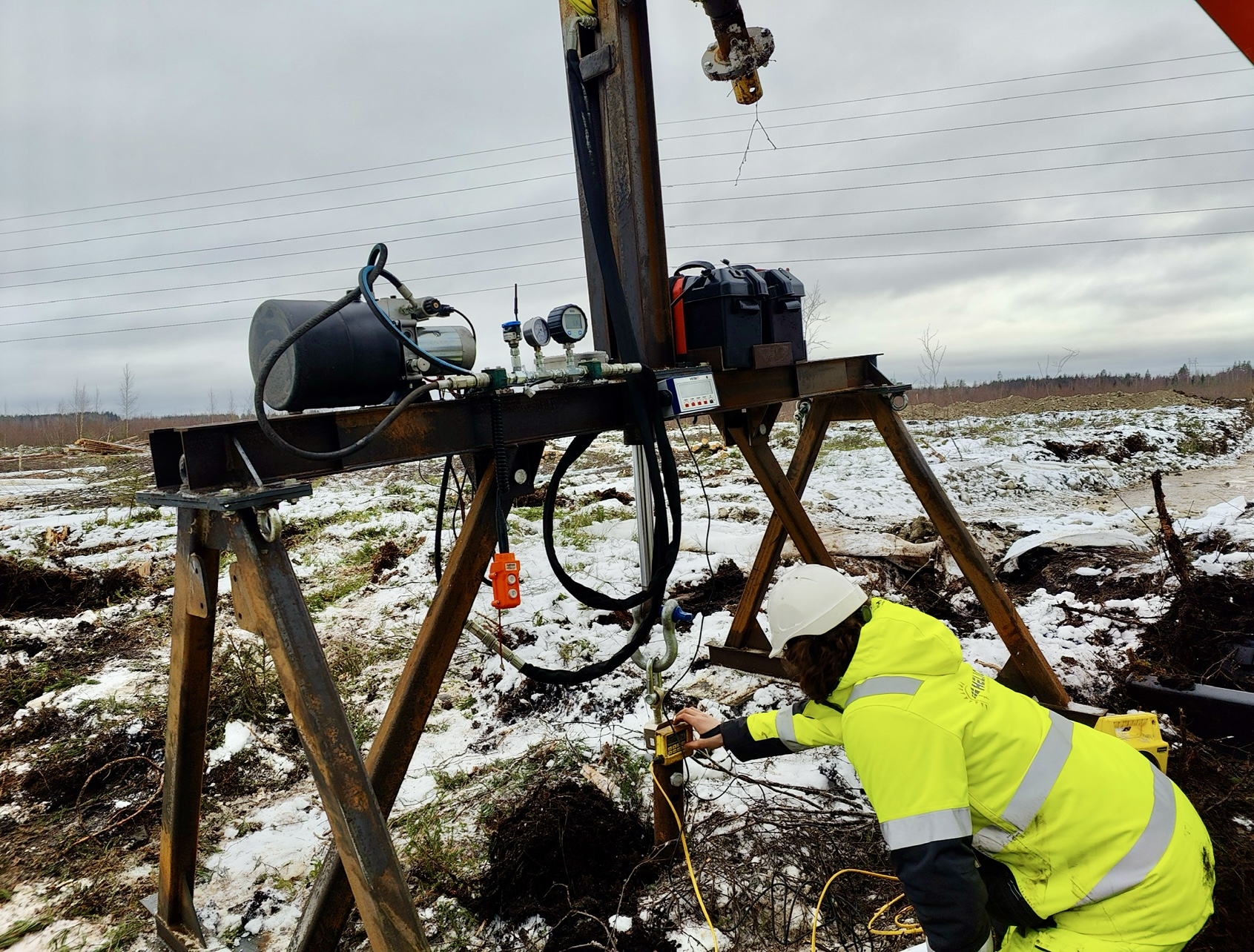
Load testing of screw-piles can be a vital part of improving design performance, ensuring adequate safety factors and saving money for clients when performed well.
Load Testing and Screw Piles – What Do You Need to Know?
What is a load test?
A screw pile load test is essentially a process to assess the load carrying characteristics of foundation screw piles. Test piles will be selected, and an axial load applied to the top. This is usually performed by hydraulic jacks or test bench. With the load being incrementally increased by until the load desired data is achieved, this could loading the pile to many times the required load or until failure to derive maximum feedback. This tests both the individual pile, and the response of the surface in which it is installed, this ultimately leads maximum safety as the bearing capacities of the pile and ground are discovered leading to the most accurate pile design.
Why is a load test necessary for screw piles?
The answer here comes down to safety and accuracy. If a screw-pile designer and installer claim specific performance of screw-piles on a large site, it may be pertinent to test the claimed performance so the customer can have peace of mind. In addition, screw-pile companies may wish to offer the best balance of safety and economy for their client, so testing can ensure they supply the right specification screw-piles for safety and also ensure they don’t unnecessarily over-spec the piles leading to unwanted extra costs for the client.
Do you always need to perform a full load test?
This depends on the project. For smaller builds – garden sheds, decks, small fences, house extensions – a load test may not be necessary. But for very large projects – housing developments, commercial buildings, solar fields or large industrial structures a load test are advisable.
What causes screw piles to fail a load test?
Failure here is an interesting concept. If a screw-pile is tested and does not meet the requirements outlined for the structure they hold, this could be due to their incorrect selection of a screw-pile. However, sometimes it could be the soil conditions that fail long before the failure of the screw-pile, which could mean the piles were not installed to the correct depth. Lastly, engineers may actually want to load test to failure to gather more data on the ground conditions and screw-pile.
What do you do if a pile fails a load test?
There may be many reasons for a failure on a screw-pile load test. Maybe the test was designed to discover the failure point of the screw-pile or ground conditions, maybe the wrong size of screw-pile was specified or maybe the ground conditions were worse then expected. Regardless if the test wass performed correctly it will have been a rich data collection exercise that should lead to an improved and more efficient design for the engineers to produce or in some cases rule out the use of screw-piles in extreme ground conditions. Overall though, it should lead to more data for the clients foundations and more data is good.
Get in touch with UK Helix to discuss our screw pile products and services.